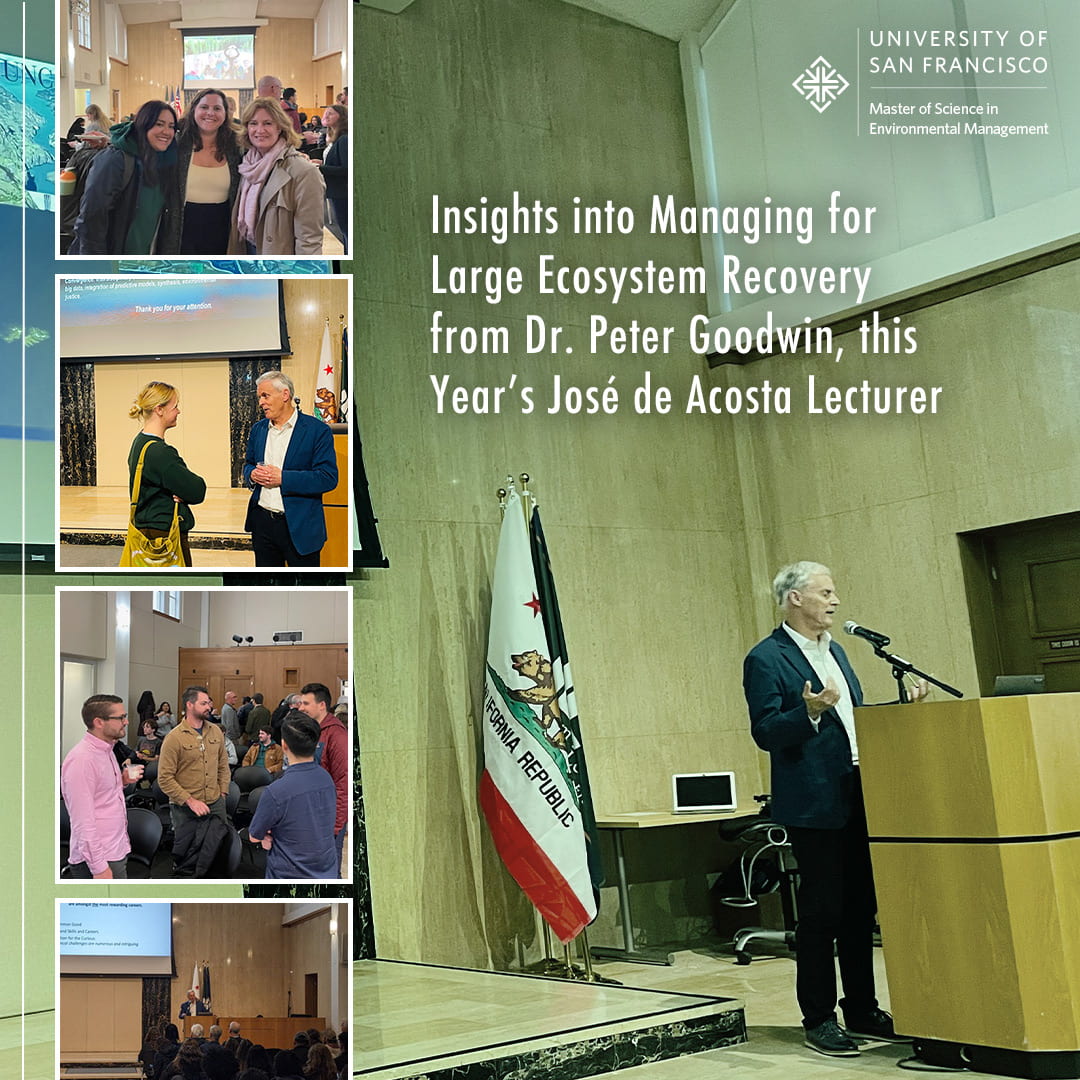Climate change and loss of biodiversity are twin crises creating increased complexity and uncertainty for the environmental managers of today and tomorrow, shared Dr. Peter Goodwin during this year’s 13th annual José de Acosta lecture. The lecture is a signature environmental event for USF each Spring, hosted by the Department of Environmental Science and initiated through a generous donation of USF Alumna and Board of Trustees member Michelle Skaff and her husband Dan. José de Acosta was a sixteenth-century Jesuit scientist who, nearly 300 years before Charles Darwin’s work on natural selection, studied natural history issues in South America. He based his work on meticulous observation and keen insight and wrote extensively on wildlife, atmospheric science, oceanography, and anthropology.
Effectively addressing these twin crises in the face of increased complexity and uncertainty requires flexibility, and Dr. Goodwin urged attendees to embrace an adaptive management approach. “Don’t get bogged down by the complexity. Move ahead. Learn by doing,” he said, going on to outline a four-step process: Plan, Do, Observe, Modify.

Dr. Goodwin retired as President of the University of Maryland Center for Environmental Science (UMCES) last year, after a 40-year career in science and higher education across Idaho, California, and Louisiana. While in Maryland, he served as lead science advisor on the Maryland Commission on Climate Change and played an integral role in the Chesapeake Bay Program – a prime example of large ecosystem recovery despite significant challenges including the complexity of hydrodynamic modeling and flood flow, the implementation of nature-based solutions, and implications for threatened and endangered species. Dr. Goodwin pointed to Maryland’s Climate Solutions Now Act of 2022 as a critical inflection point for this state, where sea level is rising quickly, and underscored the act’s multi-dimensional goals across emissions reduction, economic well-being, and environmental justice.
He also shared insights into another large ecosystem recovery project in which he was involved: the Napa River Basin. In this case, 27 local community stakeholder groups and 24 government agencies came together to successfully create 659 acres of wetland, mudflat, and open water – eliminating the damaging floods that had previously been common in the area and successfully bringing to life a “Living River” strategy that has enhanced the local ecosystem in myriad ways.
What these two success stories had in common, Dr. Goodwin shared:
- Courageous agency leadership
- Committed community champions
- Well-resourced applied research to support adaptive management
- Actionable science
- Communication of science and decisions

The theme of communication was an important one throughout the lecture – especially in this era where there is so much data, and information can be overwhelming. Dr. Goodwin encouraged students about their prospects for the future, emphasizing the value to society of synthesizing data and information, making it actionable, and communicating science effectively. “Now is a time for optimism,” he underscored.
He closed by imploring students to seize this opportunity and pointed to environmental science and engineering as two of the most rewarding careers – serving the common good and representing some of the most in-demand skills today. “Why environmental science and engineering?” Dr. Goodwin asked. “Because it provides satisfaction for the curious. The challenges are numerous and intriguing. The impact of your work is significant for all of us living on this pale blue dot we call home.”







